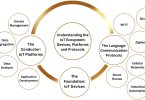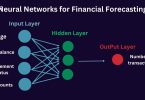Generative AI and its Contribution to Creativity:
The presence of technology in modern society has fostered the merging of technology and creativity leading to various developments. One of the exciting new concepts is Generative Artificial Intelligence (AI), which affects creative professions. In this context, generative AI has revealed new sides of art, music, design and content creation; changed the conventional approaches to creativity.
That is why organizations like WEBSTEP are at the forefront of such a metamorphosis, using generative AI to open new possibilities in terms of creativity.
Generative Artificial Intelligence:
One of AI’s most particular fields Generative AI, is changing traditional creative processes and workflows. While conventional applications work based on algorithms and structures, generative AI relies on large data sets to identify and generate new information independently.
- Progress in Art and Design:
Generative AI is proving a major influence on the processes of art and design by going beyond the established frameworks. There is evidence that artists and designers are using AI to produce new kinds of forms and styles/concepts. This contains generation of detailed digital paintings, post-modernist fashion designs architectural designs and layouts; which makes the art form virtually exempt from limitations.
One of the subcategories of Generative AI, generative adversarial networks (GANs) are widely used in art as they allow for creation of realistic images and animations. The artists engage GANs to create surrealisms, abstractions and ‘deepfakes’ or art pieces that depict the art beyond reality.
Also can be said to democratize creativity especially given the fact that the average person may not be so skilled when it comes to designing creative works. Using the AI accessible tools and applications, people can participate in the creation of the digital art and design without any prior experience or knowledge in the field.
- Transformations in Music:
Generative AI is coming up in the music industry through changing how music is produced, composed and listened to. Musical big data that consists of a huge amount of information is used to train AI algorithms to understand patterns and structures related to this type of art and create new compositions of all genres and directions.
Music created by AI is not mere mimicry but produces symbiotic interaction possibilities between man and machine. AI can help musicians and composers to find new ideas for melodies, harmonies, and rhythms. However, generative AI is revolutionizing the music industry by providing individualized listening experiences. The streaming platforms use machine learning techniques to recommend playlists based on the users’ choices, to familiarize them with new artists and types of music.
- Generative AI Content Generation:
Automated Content Generation:
Large language and image models are on the rise for automating content generation which falls under the generative AI models. These AI systems can write articles, blogs and even social media posts, tweets, and so on. For people, who write for businesses or for themselves this technology is extremely helpful and time-saving. This way, generative AI relieves people who would otherwise spend their time conveying similar messages from such activities and allows them to dedicate more time to more meaningful tasks.
Improved Content Quality:
One of the most appealing aspects of using AI for text generation is the possibility of obtaining very high-quality content. AI models work with large datasets; thus, they can learn and find patterns that may not be observable to freelance writers. This extensive training enables AI to provide information to the reader that is more often accurate. Therefore, content created by AI may at times be superior to that created by man in quality and depth of information.
Increased Content Variety:
Let it be known that generative AI is not confined to text alone but can also generate images, video, and other multimedia information. It allows business entities and professionals to come up with a wide variety of content types making their work more interesting and appealing to a wide market. Using AI-generated visuals and videos in content creation will improve the storytelling and appeal to various segments of the targeted audience.
Personalized Content:
AI models can produce content that is unique to each user based on the user’s specific requirements. Using various parameters about the users and their activity AI can generate material that would be more relevant to the particular audiences. This personalization raises the chances of the content getting read, passed around and used in a way, which enhances its impact and utility.
Mimicking Human Creativity:
Creativity is another remarkable aspect that can be seen in generative AI since it mimics creativity in humans. AI can present new insights and approaches to the problem that a human writer might not have thought of, such as the idea of individualized material.
Summary:
Generative AI has transformed art, music and content generation in a way that was unimaginable even a decade ago. It provides artists with infinite opportunities, encourages creativity in the creation of music and optimizes the creation of content. The possibilities are endless for the future with AI possibly co-writing scripts, tailoring education, or even creating beautiful architectures. There are ethical issues that come with copyright and bias, but the opportunities for human-AI collaboration are vast.








Leave a Comment